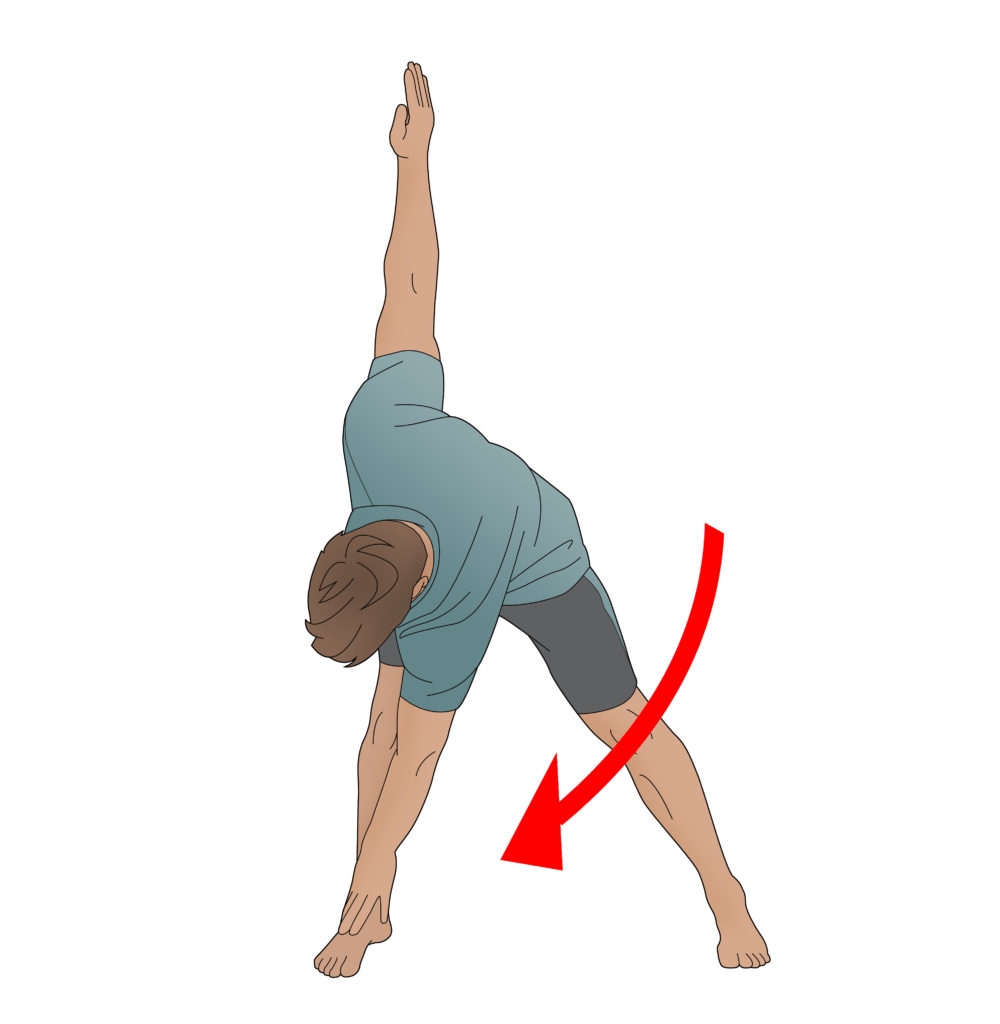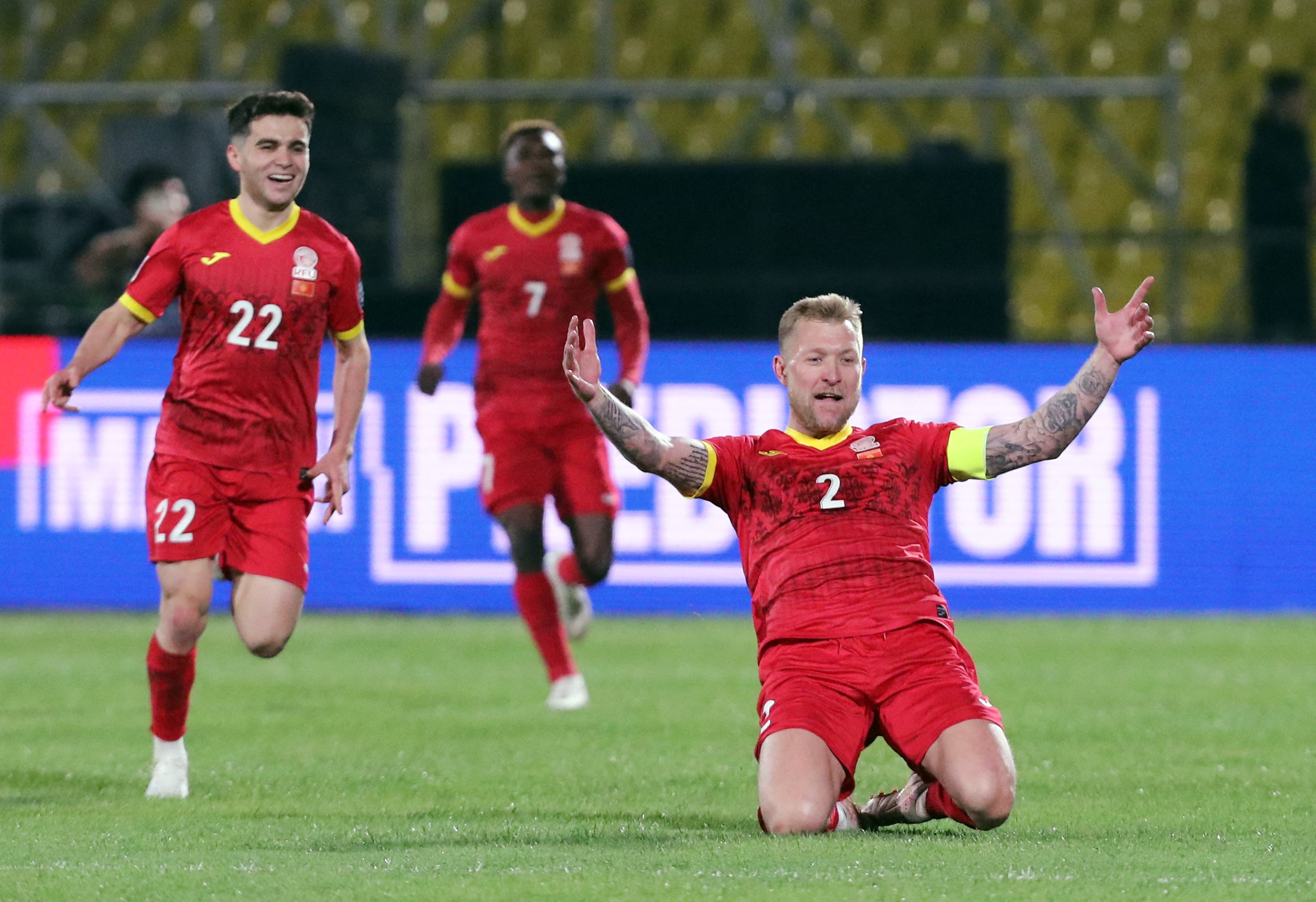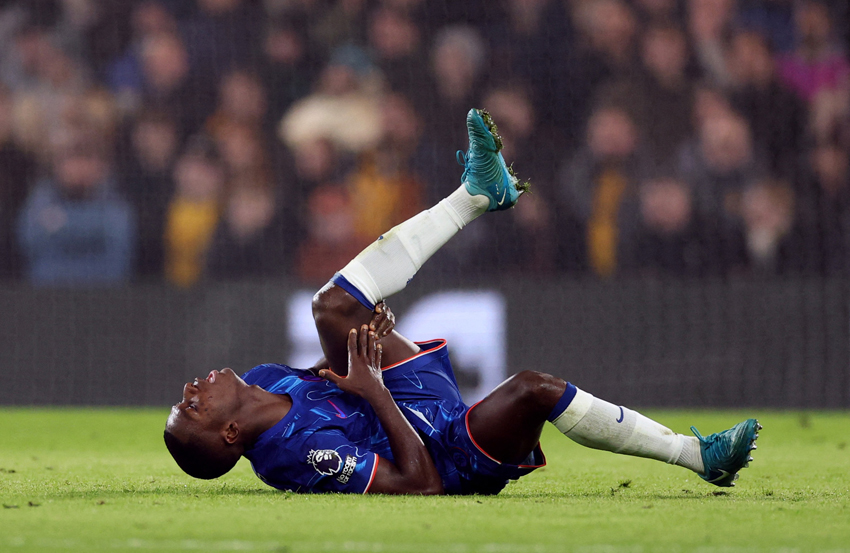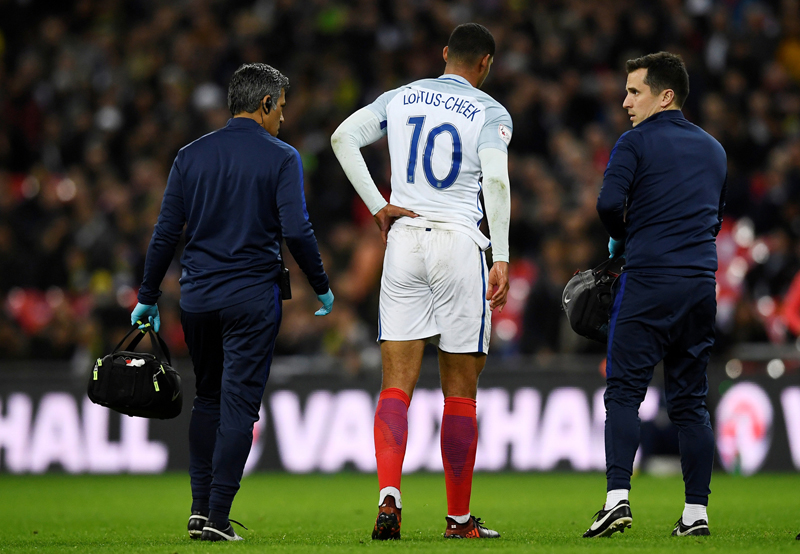Coming up short: hamstring tightness and running performance

Athletes often moan about tight hamstrings, but are they really shorter than they should be? Alicia Filley explains how to measure your hamstrings and how their flexibility impacts your running
Complaints about ‘having tight hamstrings’ are so prevalent that the condition now has a name: short hamstring syndrome (SHS). Short hamstring syndrome is considered one of the predisposing factors for hamstring injury, and while the prevalence of SHS is unknown, hamstring injury is one of the most common leg injuries in runners. It accounts for 13-15% of injuries in Australian football, with similar rates of injury in elite cricketers and professional soccer playersJ Sports Med. 2014; doi: 10.1155/2014/127471. Epub 2014 Apr 15.
Long story short
The hamstring muscles cross two joints: the hip and the knee (see figure 1). If the hip is fixed then the hamstrings actively flex the knee. But if the knee is stable, then they extend the hip. Therefore, the ‘tightness’ felt in the hamstrings depends on whether these two joints are flexed or extended. The muscle is at its maximal length with the hip flexed and the knee extended.Figure 1: hamstring anatomy

This elongated position is exactly where the muscle is at the end of the swing phase of running (see figure 2). When the foot strikes the ground, the hip should be flexed around 25° and the knee flexed about 20°) Clin Sports Med. 2012;31:87–201. Therefore, the hamstrings need enough ‘extensibility’ to reach this position. Hamstrings that lack this range alter the biomechanics of running, shorten the stride, and strain the muscles in the low back.
Shorter hamstrings generally decrease hip flexion during swing. If the hip cannot fully flex, then stride length decreases. If the hip flexor muscles fight for that range and the hip does reach full flexion, knee flexion increases. With more flexion/less extension at the knee, step length still shortens. Either way, tight hamstrings will alter running biomechanics, which means the stride pattern suffers.
Tight hamstrings also pull the pelvis into a posterior (rearwards) tilt. This decreases the natural curve in the low back. However, the muscles of the low back will fight to maintain this curve and protect the integrity of the spine. When muscle fatigue sets in from overactivation, the trunk leans forward and places even more stress on the low back.
Let’s not forget the other end of the hamstrings as well. Remember that the knee must reach nearly full extension at the end of swing. If tightness in the hamstrings prevents this, the quadriceps may pull even harder to get those last few degrees of motion at the knee. This unbalanced force of pull at the knee can cause painful patellar tendinitis and patelofemoral syndromeJ Athl Train. 2012 Jan-Feb;47(1):5-14.
Figure 2: End swing phase when running

This figure illustrates mid-swing and foot strike, which ends the swing phase of running. At foot strike, the hip flexes to around 25° and the knee extends to within 10° to 20° of full extension (see arrows).
The short end of the stick
At the transition point between swing and stance, the hamstrings endure forces up to eight times the body’s weightFront Physiol. 2015 Dec; 6(404):1-12. Researchers believe that the hamstrings are most vulnerable to injury during this transition. So does tightness increase this risk?To test the relationship between hamstring strain and flexibility, a group from the Shanghai University of Sport enlisted the help of ten male and ten female college studentsJ Sport Health Sci. 2017; doi: 10.1016/j.jshs.2017.03.012. Epub 2017 March 28. They hypothesised that during sprinting, the more flexible hamstrings would endure less muscle strain at the end of swing. Their hypothesis proved correct, as higher levels of hamstring flexibility were correlated with lower incidence of hamstring muscle strain. This study, though small, is the first to show that a more flexible hamstring bears less strain in high speed running.
Coming up short
So, what is ‘normal’ length for the hamstrings? To answer this question, a group of scientists at the Mayo clinic evaluated the hamstrings of 214 healthy volunteers between the ages of 20 and 80 years. They hypothesised that ‘normal’ would differ between men and women, and also vary at different ages. Therefore, they grouped their subjects into age brackets for every ten years of age, with each group containing roughly even numbers of men and women.The study used two common modes of measuring hamstring flexibility: the straightleg raise (SLR) and the popliteal angle (PA) (see figures 3 & 4). Surprisingly, age did not influence hamstring flexibility in either men or women. There was, however, a significant difference in the measurements between the gendersJ Orthop Sports Phys Ther. 2005 April;35(1):246-51. This is the first study to give data on hamstring extensibility based on age and gender. Keep in mind that the flexibility norms found in this study does not necessarily mean the ‘best’ levels of flexibility. Ideally, a PA measurement should be between 160° and 180° in order for the knee to have around 20° of flexion at foot strikeHoppenfeld, Stanley, and Richard Hutton. Physical examination of the spine and extremities. New York: Prentice Hall, 1976. Print..
Figure 3: Straight-leg raise test

Figure 4: Popliteal angle test part one

This is another common measure of hamstring flexibility. To perform the test, an examiner passively flexes the hip and stabilises the thigh perpendicular to the exam table. Keeping the thigh vertical, he/she extends the knee until there is firm resistance. The Mayo Clinic study found the mean popliteal angle for men to be 141.4° ± 8.1 and 152.0° ± 10.6° for women(6).
Length matters
Researchers in the Czech Republic wondered if greater extensibility in the hamstring resulted in better sprinting and jumping performance. They evaluated the flexibility, explosive strength, and 10-meter sprint performance of 56 young soccer playersJan, Vich. Relationship Between Flexibility, Explosive Strength, and Speed of Running in Young Soccer Players. is.muni.cz/repo/1319426/?lang=en;info=. Masaryk University, 20 Aug. 2016. Web. 4 April 2017. Proceedings of scientific papers, Masaryk University, Brno, Czech Republic. The findings revealed a significantly positive relationship between flexibility and performance results. In other words, the more flexible players performed better. Based on these findings, the authors felt that soccer players should place more emphasis on stretching. For top performance, they recommend dynamic stretching before training, followed by static stretching at the end of a training session.Scholars at the University of Jaen in Spain were also keenly interested in the relationship between flexibility and performance in football-specific skillsJ Sports Sci. 2015;33(12):1293-7. The researchers compared the vertical jump, agility, 20m sprint, and ball kicking speed of 43 young athletes from a semi-professional football academy. The subjects were of comparable height, weight, and body mass index. What differed among them was their hamstring flexibility.
The results showed that the flexible group performed significantly better on all the skills measured and that adequate hamstring length is important for optimal performance. While these two studies on hamstring length looked at the performance of soccer players, it’s reasonable to assume – given the large amounts of running during a soccer match – that optimal hamstring length can benefit runners too.
A long shot?
Clearly, elasticity within the hamstring enhances performance and may decrease risk for injury. But how do you determine if your hamstrings are tight? Forget about trying to touch your toes. The best way to know is to ‘eyeball’ your popliteal angle. Enlist the help of a partner or use a full-length mirror. Lie on your back and keep one leg straight, heel pressed into the ground. Then bend your knee toward your chest and hold your other thigh vertically, perpendicular to the floor. Now try to lift your heel to the ceiling. Ideally, you should nearly (within 20°) be able to fully extend the knee so that the ankle is in line with the hip (see figure 5). If you lack that range, then there is room for improvement!Figure 5: Popliteal angle test part two

A bit of a stretch
Chances are, your hamstrings are a bit tight. Nothing a stretch can’t fix! For overall fitness, the American College of Sports Medicine recommends an active warm up followed by static stretching (taking the muscle to the end range and holding there for an allotted period of time) two to three times per week. They advise two to four reps of each stretch, holding for 15-30 secondsInt J Sports Phys Ther. 2012 Feb;7(1):109-115. A consistent static stretching program should show marked improvement in hamstring length in six to eight weeks.The research supports these recommendations, but some confusion exists as to the effect of static stretching on performance. Studies show that when performed before or after an active warm up, using the recommendations stated above, static stretching does not affect strengthInt J Sports Phys Ther. 2012 Feb;7(1):109-115. However, dynamic stretching (actively moving the muscle to its end range repeatedly but not holding there) is also an effective way to stretch, and can be easily incorporated into a warm-up routine on training days.
Another mode of stretching, called precontraction stretching, includes techniques you may have heard from a physiotherapist, such as proprioceptive neuromuscular facilitation (PNF). These methods employ some level of active contraction of either the tight muscle, the opposing muscle, or both. While all three types of stretching are effective, PNF type techniques may show more rapid improvement in flexibility than the othersInt J Sports Phys Ther. 2012 Feb;7(1):109-115.
The long and short of it
Tightness is often the underlying cause of injury to the hamstrings and strain in the low back. Shortened hamstrings limit the range of motion of the hip and knee and change the biomechanics of running. The negative effects of these biomechanical changes may be the reason athletes with less flexibility perform worse on tests of speed, jumping, and agility. To make the most of your training and boost your performance, start stretching those hammies!Stretching suggestions
Before training, incorporate dynamic hamstring stretches into your warm-up routine. After your workout, get in a good static stretch following the recommended guidelines. On your off days, perform a quick warm up –think walk around the block or an easy cycle through the neighbourhood- followed by PNF stretching. You should see marked improvement in six to eight weeks.*Dynamic stretches


*Static stretches


*Pre-contraction stretch

You need to be logged in to continue reading.
Please register for limited access or take a 30-day risk-free trial of Sports Performance Bulletin to experience the full benefits of a subscription. TAKE A RISK-FREE TRIAL
TAKE A RISK-FREE TRIAL
Newsletter Sign Up
Testimonials
Dr. Alexandra Fandetti-Robin, Back & Body Chiropractic
Elspeth Cowell MSCh DpodM SRCh HCPC reg
William Hunter, Nuffield Health
Newsletter Sign Up
Coaches Testimonials
Dr. Alexandra Fandetti-Robin, Back & Body Chiropractic
Elspeth Cowell MSCh DpodM SRCh HCPC reg
William Hunter, Nuffield Health
Keep up with latest sports science research and apply it to maximize performance
Today you have the chance to join a group of athletes, and sports coaches/trainers who all have something special in common...
They use the latest research to improve performance for themselves and their clients - both athletes and sports teams - with help from global specialists in the fields of sports science, sports medicine and sports psychology.
They do this by reading Sports Performance Bulletin, an easy-to-digest but serious-minded journal dedicated to high performance sports. SPB offers a wealth of information and insight into the latest research, in an easily-accessible and understood format, along with a wealth of practical recommendations.
*includes 3 coaching manuals
Get Inspired
All the latest techniques and approaches
Sports Performance Bulletin helps dedicated endurance athletes improve their performance. Sense-checking the latest sports science research, and sourcing evidence and case studies to support findings, Sports Performance Bulletin turns proven insights into easily digestible practical advice. Supporting athletes, coaches and professionals who wish to ensure their guidance and programmes are kept right up to date and based on credible science.









